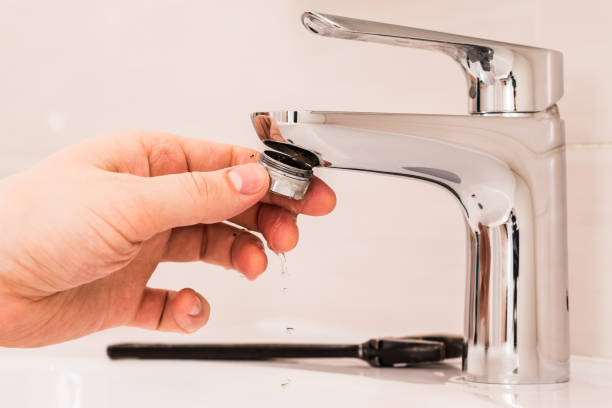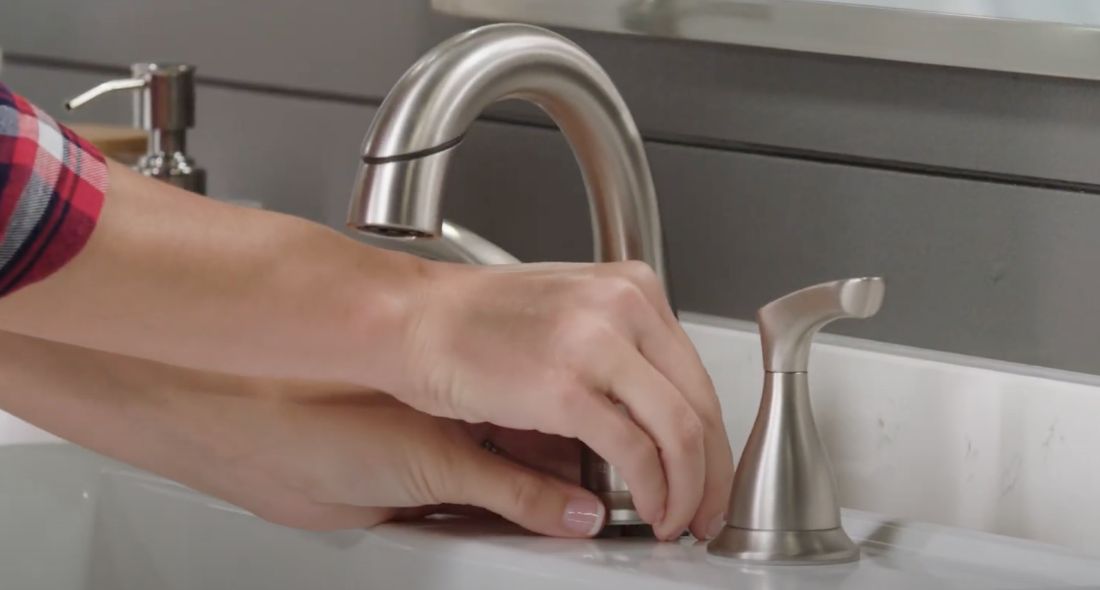How do you really feel when it comes to Why Are My Faucets Dripping (And Can I Fix It Myself)??

Dripping faucets could feel like a small trouble, however their impact surpasses just the aggravation of the noise. From drainage to sustaining unnecessary monetary expenses and wellness threats, ignoring a leaking faucet can cause numerous effects. In this article, we'll explore why it's crucial to address this typical family problem quickly and successfully.
Wastefulness of Water
Ecological Effect
Leaking faucets contribute considerably to water wastage. According to the Epa (EPA), a solitary faucet dripping at one drip per secondly can lose more than 3,000 gallons of water per year. This not just stress water resources however also influences ecological communities and wildlife dependent on them.
Step-by-Step Overview to Repairing a Dripping Tap
Tools Called for
Prior to attempting to deal with a dripping tap, gather the needed devices, including a flexible wrench, screwdrivers, substitute parts (such as washing machines or cartridges), and plumber's tape.
Usual Faucet Issues and Their Solutions
Determine the sort of tap and the particular concern causing the drip. Typical issues consist of damaged washers, corroded valve seats, or malfunctioning O-rings. Describe supplier guidelines or online tutorials for step-by-step guidance on repairs.
Financial Costs
Increased Water Bills
Beyond the ecological influence, trickling taps can pump up water expenses significantly. The built up wastage over time translates right into greater utility expenditures, which might have been avoided with prompt repair services.
Prospective Home Damage
In addition, extended trickling can cause damage to components and surfaces bordering the tap. Water build-up can create discoloration, corrosion, and also architectural problems if left neglected, resulting in extra repair expenses.
Wellness Concerns
Mold and Mold Development
The constant existence of dampness from a dripping faucet produces a perfect atmosphere for mold and mildew growth. These fungi not only compromise interior air top quality but likewise posture health dangers, particularly for individuals with respiratory system problems or allergies.
Waterborne Illness
Stationary water in trickling taps can become a breeding ground for microorganisms and various other virus, increasing the risk of waterborne illness. Contaminants such as Legionella microorganisms flourish in stagnant water, potentially causing significant illnesses when consumed or breathed in.
Do it yourself vs. Professional Repair service
Benefits and drawbacks of Do It Yourself Repair
While some may attempt to deal with a dripping faucet themselves, do it yourself fixings feature their own set of challenges. Without appropriate understanding and tools, do it yourself efforts can aggravate the problem or cause insufficient repair work, extending the issue.
Benefits of Working With a Specialist Plumber
Employing an expert plumber ensures that the underlying cause of the dripping faucet is resolved efficiently. Plumbing professionals possess the competence and equipment to detect and fix faucet concerns effectively, conserving time and lessening the risk of more damage.
Ecological Responsibility
Private Payment to Conservation
Taking obligation for repairing leaking taps lines up with more comprehensive efforts toward water conservation and environmental sustainability. Every person's activities collectively make a significant impact on maintaining precious resources.
Sustainable Living Practices
By prioritizing prompt repairs and embracing water-saving practices, individuals contribute to lasting living techniques that profit both present and future generations.
Safety nets
Routine Maintenance Tips
To avoid leaking faucets, do routine maintenance such as cleansing aerators, checking for leaks, and changing worn-out parts without delay. Furthermore, take into consideration installing water-saving gadgets or updating to extra effective components.
Relevance of Prompt Repair Works
Attending to dripping faucets as soon as they're observed protects against additional water waste and prospective damage, eventually saving both water and money in the future.
Impact on Residential Property Worth
Assumption of Well-Maintained Property
Preserving a residential or commercial property in good condition, consisting of dealing with maintenance concerns like dripping taps, enhances its viewed worth and worth amongst prospective purchasers or occupants.
Influence on Resale Value
Qualities with properly maintained plumbing components, consisting of taps, command higher resale worths in the real estate market. Resolving trickling taps can add to a positive impression throughout home examinations and negotiations.
Verdict
Addressing a trickling faucet surpasses simple benefit; it's a vital action toward saving water, minimizing economic prices, and safeguarding health and residential property. Whether with DIY fixings or expert aid, taking action to deal with leaking taps is a tiny yet impactful way to advertise liable stewardship of resources and contribute to a much healthier, extra sustainable future.
How to Fix a Leaky Faucet: Step-by-Step Repair Guide
A leaky faucet may seem like a simple annoyance, but if it's not fixed promptly, that leak could cost hundreds to potentially thousands. From water damage to mold, mildew, and high water bills, even a tiny leak can be catastrophic if left unattended. Damage like this can even affect the overall value of your home, so it's important to take the right approach for leaky faucet repair. You may need the help of a plumber in some cases, but we've got a few tips you can try on how to fix a leaky faucet before calling the pros.
Four Faucet Types
When you're learning how to fix a leaky faucet, the first step is knowing what kind of faucet you're working with! There are four common types.
Cartridge Faucets
Cartridge faucets come in one- or two-handled varieties. In one-handled cartridge faucets, hot and cold water combines in a single cartridge. In the two-handled versions, hot and cold water are controlled separately and mixed in the faucet.
Ball Faucets
Ball faucets have a single lever you push up and down to adjust the pressure and rotate to change the temperature. A slotted metal ball controls the amount of water allowed into the spout.
Compression Washer Faucets
They're the oldest type of faucet, but they're still used in many homes — especially older ones. Compression faucets have two separate handles that, when turned, raise or lower the washer that seals a water valve. This valve stops water from flowing through the faucet when it is turned off.
Disc Faucets
Disc faucets rarely need to be repaired due to their maintenance-free design. The water flow is controlled by two discs — the upper one raises and lowers against a fixed lower disc, creating a watertight seal. If your disc faucet starts leaking, you may need to replace the seals or clean residue buildup from the inlets.
Fixing a Leaky Faucet
Step 1: Turn Off the Water
Whether you're learning how to fix a leaky bathtub faucet or how to fix a leaky kitchen faucet, always turn off the water supply to your working area when you're fixing a leak. The last thing you want is a flood added to your list of things to fix.
Look for the shutoff valves below your sink or around the tub and turn them clockwise to stop the water flow. If your faucet doesn't have shutoff valves, you may need to turn off the water for the whole house. Check to make sure it's off by turning the faucet on. If nothing comes out, you're ready to start the repair.
Step 2: Take Apart the Faucet
How you disassemble your faucet depends on the type of fixture you have. You can use a flathead screwdriver to remove the caps on top of the handle or handles for cartridge and compression faucets. Inside, you should see handle screws. Unscrew these with a screwdriver to remove the handle.
Disc- and ball-style faucets will typically have an inlet screw near the handle, and removing that will reveal the interior of the faucet.
Detach the Valve Stem
For cartridge- and compression-style faucets, you'll see the inner valve stem or cartridge once you remove the faucet handles. If you have a compression faucet, unscrew the brass valve stem. If you have a cartridge faucet, pull out the cartridge. If your cartridge has been in place for a while, it may require some tools or extra force to remove it due to mineral deposits.
Examine and Replace Parts
Once you've removed the parts, check them out to confirm what needs to be replaced. You may see corroded rubber washers, O-rings, stems, or cartridges. On a ball-style faucet, check the seats and springs for damage.
If you need to repair a leaky disc faucet, check the inlet and seals on the lower disc.
Once you determine what parts must be replaced, visit your local hardware store. Bring the damaged parts with you to ensure you can purchase the correct components to replace them.
Clean Valves and Faucet Cavity
If you've removed a stem or cartridge, you may notice mineral buildup in the faucet's threads. Use white vinegar to clean the valve seat by soaking it for a few minutes, then scrub it away with a soft toothbrush and rinse with warm water. You can also clean the interior of the faucet in the same way.
Reassemble the Faucet
Once your faucet is cleaned and the required parts have been replaced, it's time to reassemble it. Put the pieces back together and slowly turn the water supply back on. Doing this slowly is crucial because too much initial water pressure can damage the new hardware you've just installed.
https://homewarranty.firstam.com/blog/how-to-fix-leaky-faucet

I ran across that piece on Should I Repair or Replace a Leaky Faucet? when doing a search on the web. Are you aware of somebody who is very much interested in the niche? Be sure promote it. Thank you for taking the time to read it.